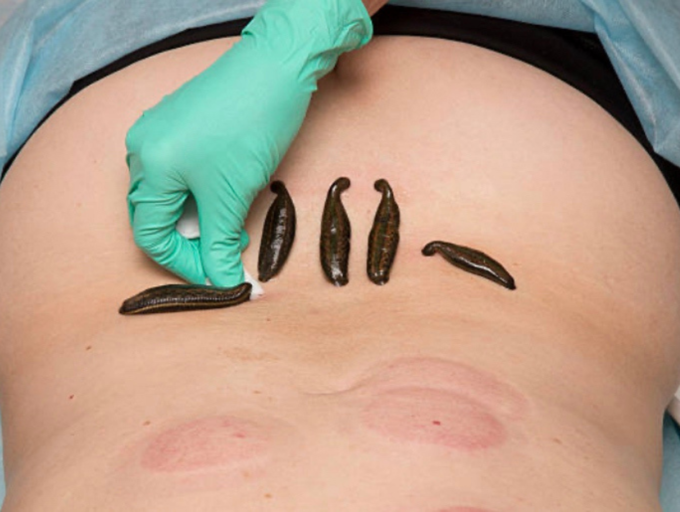Leech Therapy: All you need to know about this ayurvedic pain management technique
Leech Therapy: All you need to know about this ayurvedic pain management technique

Did you know that leeches - the parasitic worms belonging to the Hirudinea subclass, have been used in medicine to treat nervous system anomalies, dental difficulties, skin illnesses, and infections since ancient times? Not only that but modern medical science employs leeches for surgery and other microsurgery purposes because they secrete anticoagulants in form of peptides and proteins that help to keep blood clots at bay. Hence the wounds quickly heal by keeping the blood flowing through them. Most importantly, this therapy is currently experiencing a resurgence due to its ease and low cost of use in reducing problems.
How does it work?

Medicinal
leeches, which are most commonly found in Hungary or Sweden, have three
jaws, each with a single row of teeth. They use their teeth to
penetrate a person's skin and inject anticoagulants present in their
saliva. After that, the leeches are permitted to drain blood from the
patient for approximately about half an hour (this translates to only a
few millilitres of blood per leech).
Those who are at risk of limb amputation due to diabetes complications, those who have been diagnosed with heart disease, and those who are having cosmetic surgery and risk losing some soft tissue may all benefit. Blood clots and varicose veins can also be treated with this therapy.
Heart disorders

Because of its ability to reduce inflammation and enhance blood flow, leech therapy is used by people with heart disease. For persons with vascular illness and problems, leech therapy has become an accepted alternative therapy to cure them
Cancer

Because
of the platelet inhibitors and unique enzymes found in leech saliva,
cancer treatments involving leech therapy are being researched. While
leech therapy is not recommended for persons with certain blood
malignancies, it has been demonstrated to reduce lung cancer symptoms.
Injecting leech saliva into the body has been shown in numerous trials
to help prevent cancer cells from colonising the body.
Diabetes

Vascular illnesses caused by diabetes can decrease or halt blood flow to the toes, fingers, hands, and feet. The tissues that are impacted die due to the lack of blood supply. This is the most common reason for diabetes-related amputations. Increased circulation to the damaged tissues without the risk of blood clots is the most effective strategy to stop this process. Leech therapy has been found to help in numerous researches. However diabetic patients have thicker blood, Hirudin, an anticoagulant, can help thin the blood and ease pressure on the heart and circulatory system.
Cosmetic purposes

The
effect of leech therapy on blood clotting during and after these
procedures aids the body's normal and thorough healing. Blood
circulation provides a number of advantages, which has led to some
people using leech therapy to treat baldness and hair loss on the scalp.
Points to consider

Leech
therapy is not recommended for people who have autoimmune disorders,
anaemia, blood clotting problems, or have arteries that are damaged. It
is also generally advised that children under the age of 18 and pregnant
women avoid it.
Blood will leak out of the treated area when anything fails after a session of leech therapy, and the leech bite site will not close.
Leeches have the potential of causing bacterial infection, including drug-resistant germs, hence avoid them outside of a controlled environment.